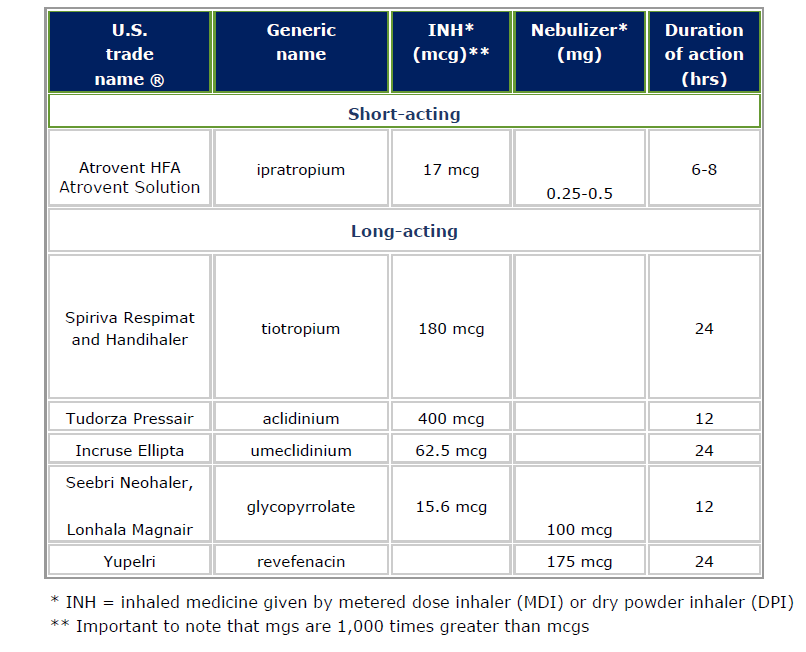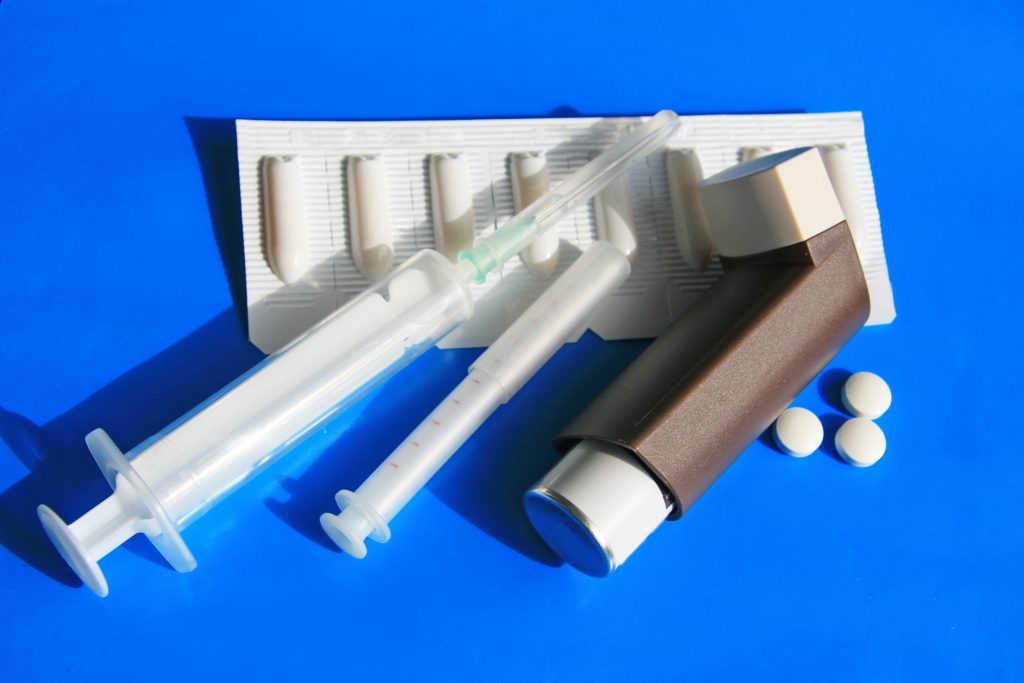Like beta-agonists, muscarinic antagonists are bronchodilators. These are also known as anticholinergics. They open your airways as well as or better than beta-agonists. Firstly, they block nerve impulses that constrict the muscles in your airways. Secondly, they reduce the amount of mucus in your airways.
Download Muscarinic Antagonists as a PDF.
There are two types of muscarinic antagonists:
- SAMAs are short-acting. For example, ipratropium.
- LAMAs are long-acting. For example, tiotropium.
COPD studies suggest these drugs can be used as a “first line of defense” to prevent flare-ups. You can take them in an inhaler or nebulizer, or as a nose spray.
Note: Taking SAMAS or LAMAS, and beta-agonists at the same time has an “additive effect.” That means you get a more powerful effect than if you took either drug by itself. As a result, they’re often used in combination inhalers.
Possible side effects of muscarinic antagonists include:
- Dry mouth
- Cough
- Headache
- Trouble urinating (especially for older men)
Note: If you spray or rub these drugs into your eyes, they can dilate your pupils. This may increase pressure in your eye and worsen one form of glaucoma.
Muscarinic antagonists

Learn more
Would you like to learn more about medicines for Alpha-1 lung disease? Check out the BFRG for a complete list of drugs to help you live well with Alpha-1.
For more in-depth information on this topic, please visit the Big Fat Reference Guide (BFRG). If you are enrolled in AlphaNet’s Subscriber Portal, you can access the BFRG here.
Download Muscarinic Antagonists as a PDF.

